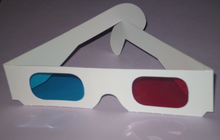Real World Lab/3D Model
Appearance







This learning resources focuses on 3D Models for a Real World Lab or objects that are available in 3D scene. Objects are used to explore by the learner visually or interact with object.
Scale
[edit | edit source]3D models can add or augement the exploration of real world space with digital objects. Digital objects may add views on the learning environments of the real world lab that are not visible by learner with her/his eyes.
- Microscopy view on organisms and cells and the internal processing in cells,...
- molecular structure of substances that have an impact on the environment and show the chemical or biological processes in animations
- add a bird view to the real world lab to add a new perspective,
- add ancient building that were there in the past with 3D Modelling and marker based persentations of 3D models in the Digital Learning Environments.
- ...
Learning Tasks
[edit | edit source]- (3D Modelling) Explore the options of 3D Modelling in the Wikiversity learning resource
- (Educational OpenSource Operating System) Explore the concept of educational mobile device operating system with OpenSource software to create, view and interact with the digital and non-digital objects and environment at a Real World Lab (e.g. a Real World Lab at an archeological site or a Real World Lab at river with an environmental focus on learning, ...). Create 3D models by the learner found in the real world lab or use 3D models in the learning environment provided by the teacher.
- (Photogrammetry) Explore the concept of Photogrammetry to create 3D Models of environment of the Real World Lab. Apply the concept on buildings or landscapes to generate a
- 3D Model of the Landscape: see video example for a cost line in Nova Scotia Andrew Hazelden (2012) Youtube-Video[1],
- 3D Model of Objects: see video example of a rock in the grass land Michael Harmon (2019)[2]
- (360 Degree Images) Comapare 3D models with 360 degree panoramic images used in the context of real world labs. What are the benefits and drawbacks of each approach.
- (Anaglyph Red-Green Images) Explore the concept of 3D anaglyph images that can be used with the requirement of mobile devices for a 3D impression of scenery or object not visible in the Real World Lab. What are the benefits and drawbacks of anaglyph images in comparison to 3D models? Select areas of application for each approach.
See also
[edit | edit source]References
[edit | edit source]- ↑ Andrew Hazelden (2012) Exploring Aerial Photogrammetry using Bundler and MeshLab - URL: https://www.youtube.com/watch?v=uB-TeEF0TSY Andrew Hazelden (accessed 2021/04/21)
- ↑ Michael Harmon (2019) 3D Scanning For Free With Meshroom - URL: https://www.youtube.com/watch?v=ZPfM52oo_S0 (accessed 2021/04/21)
